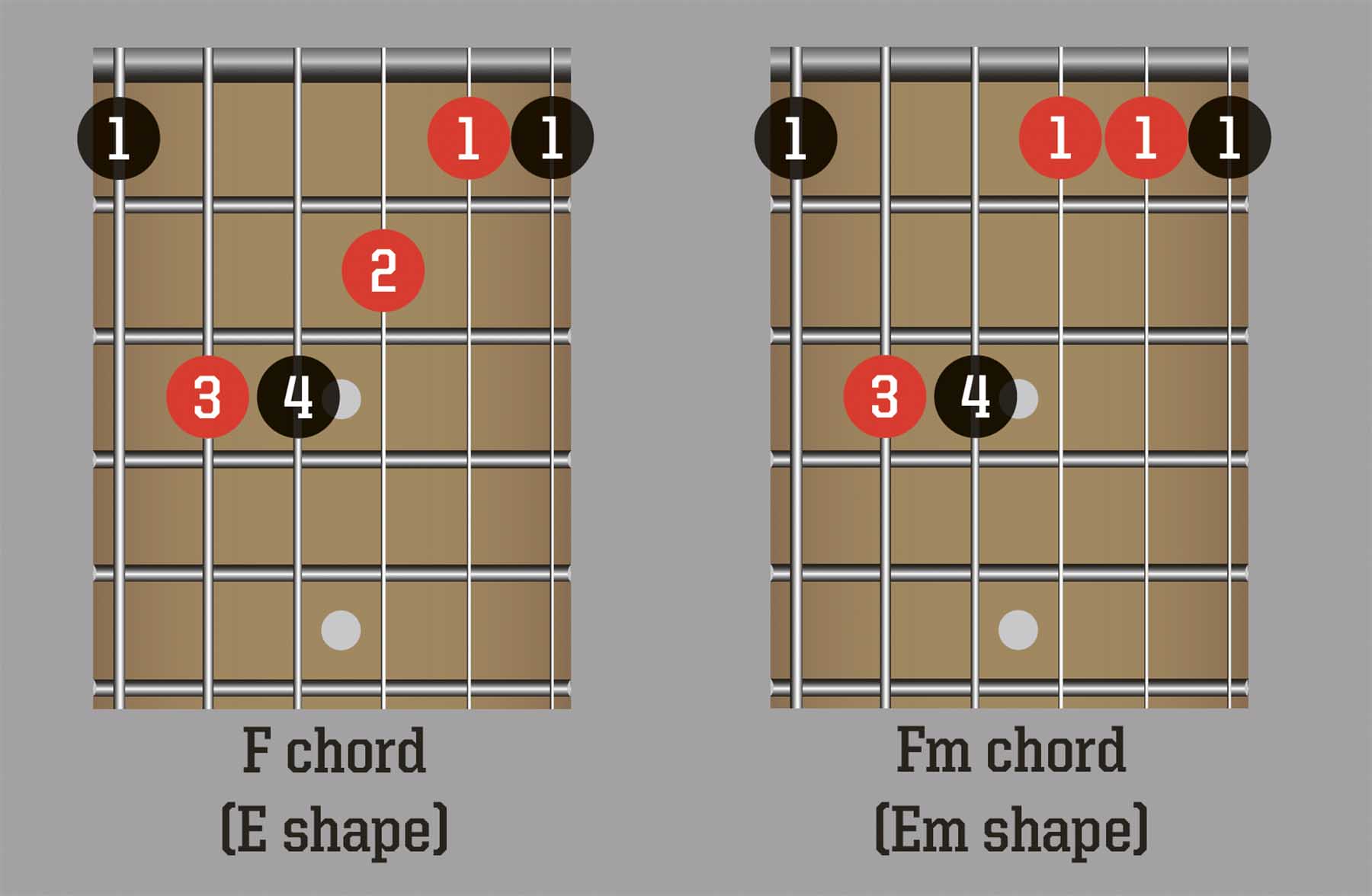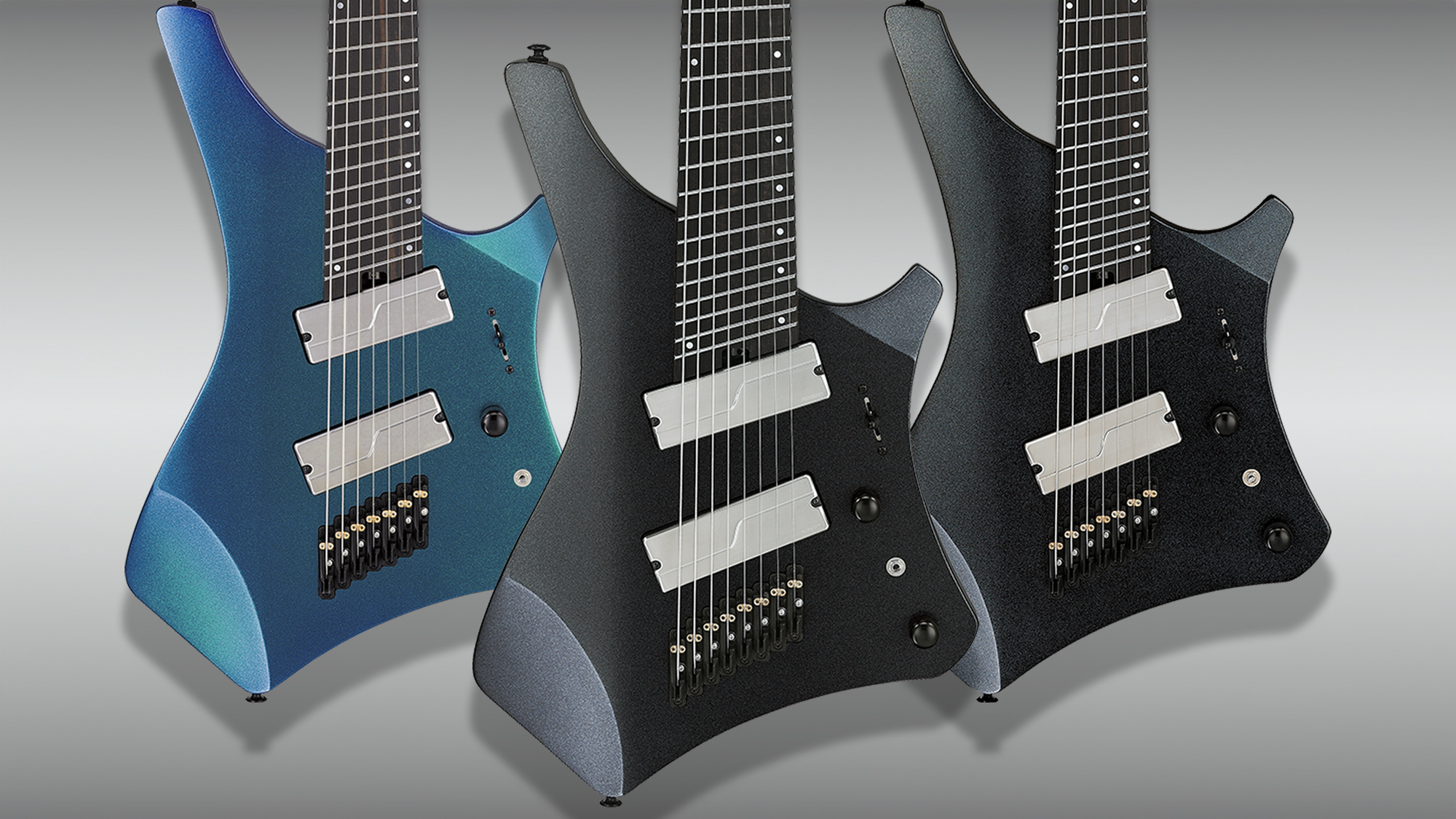How to play barre chords: the 4 most important shapes
Play more notes with fewer fingers, and get to grips with essential rock ’n’ roll, funk and soul shapes
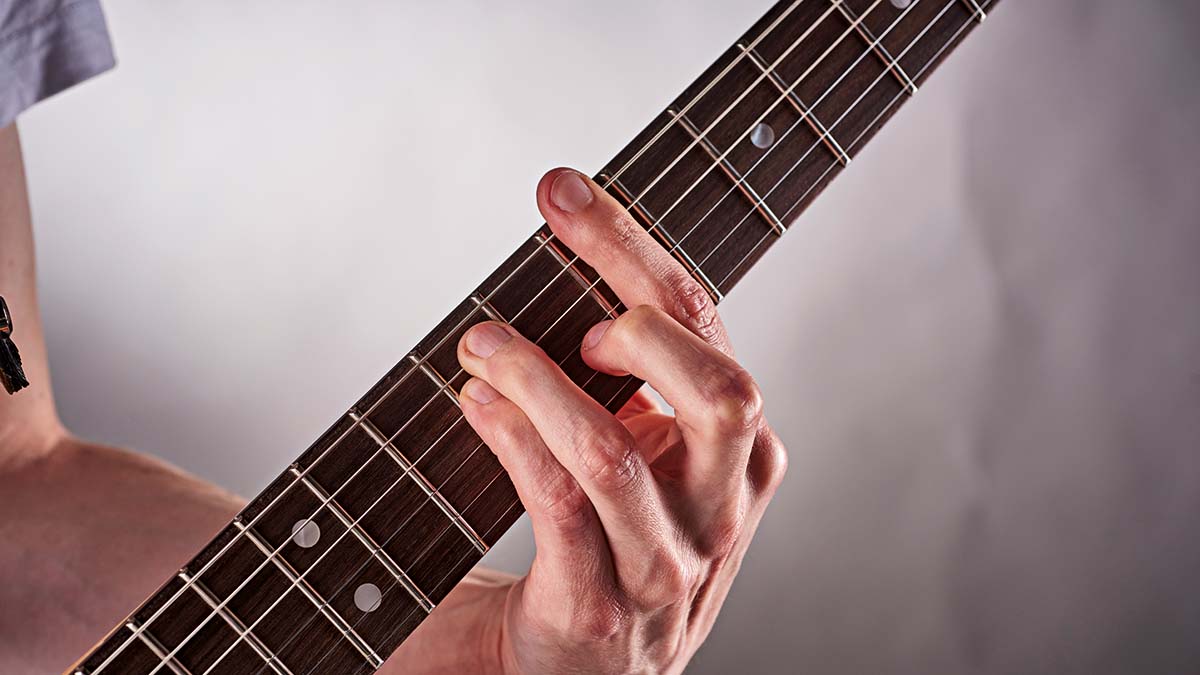
If you know how to play an open E chord, F should be easy – just move it up one fret, right? If you’ve tried that, you’ll know it doesn’t work, because the open strings need to ‘move’ too.
Full barre chords use your first finger like a capo, so you can use just a couple of shapes to play any chord. This process opens up a whole world of chords that can’t be played in open position. Eventually, you’ll learn to apply pressure evenly across all six strings with your first finger.
It’s worth practicing barring all the strings without forming a chord, but it isn’t necessary for this lesson’s shapes. You’ll be fretting notes on the middle strings with your other fingers, so it won’t matter if your barre isn’t perfect yet. You should also practice playing open chords without using your first finger, to get used to the shapes your other fingers will be making.
The four most important barre chords you need to know
The shapes we’re using are called the ‘E shape’ and ‘A shape’, even though you can use them to play any chord. That’s because they’re based on the fretting shapes used for the open E and A chords you already know (and their minor equivalents).
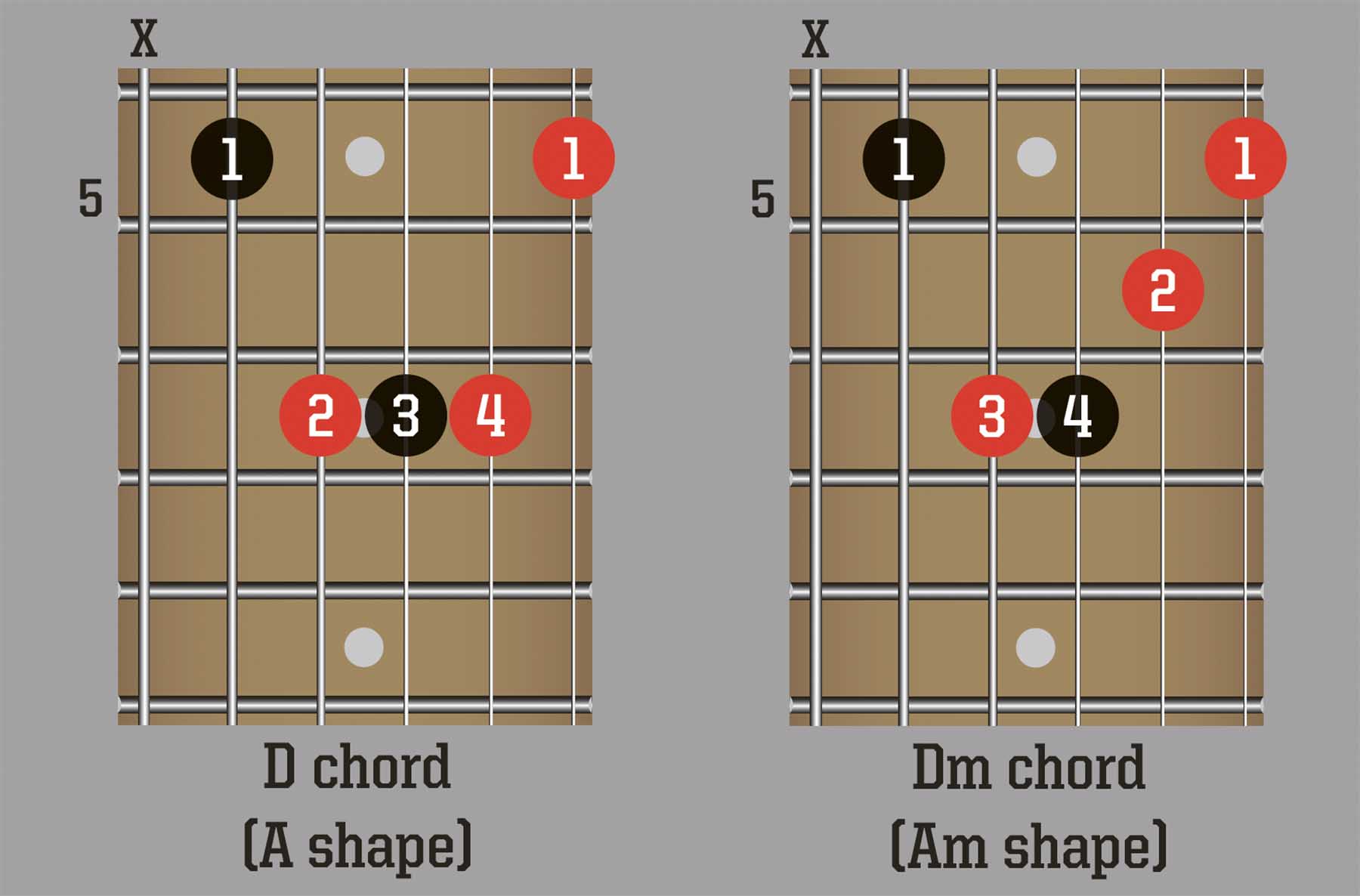
Make sure you’re really confident with those open shapes before you try these barre chords.
Technique check
1. Finger angle
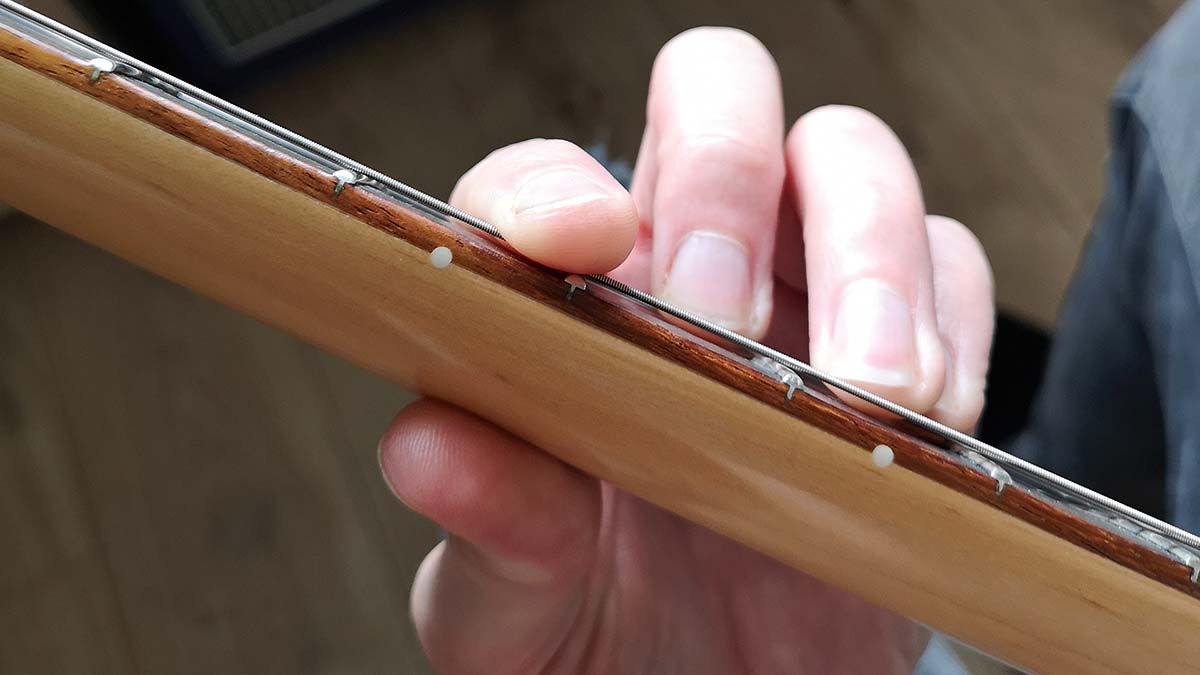
Try angling your barring finger slightly for an effective barring technique. The side of your finger is harder than the front, so it’s easier to apply pressure.
2. Leaving out a string
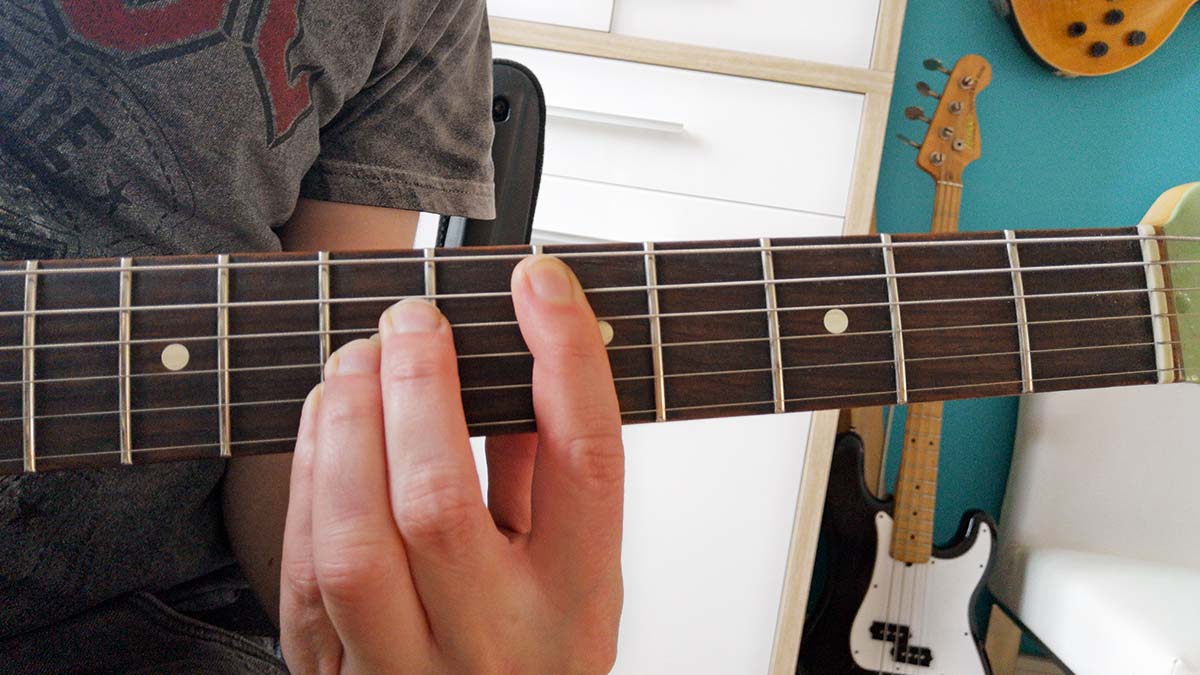
If you accidentally mute out the high E string on this shape, just leave it out. Then your first finger doesn’t even have to play a full barre!
All the latest guitar news, interviews, lessons, reviews, deals and more, direct to your inbox!
3. Third-finger barres
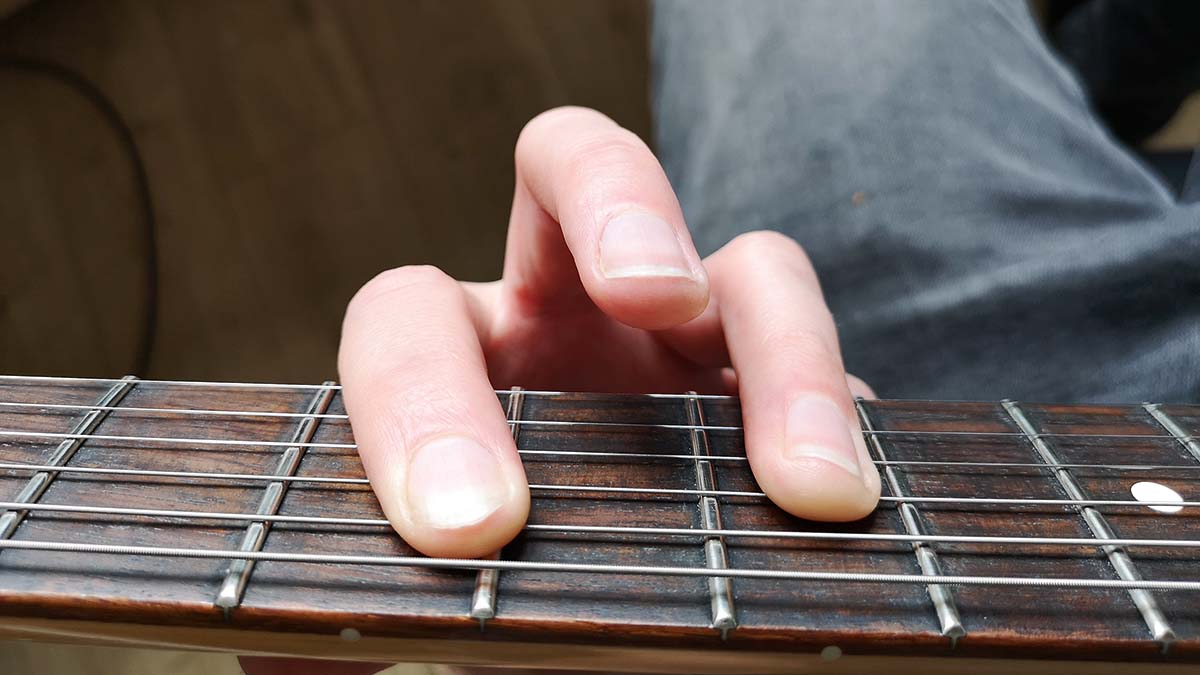
Some guitarists prefer making the A major shape by barring with their third finger instead of fretting each note with a different digit.
4. Muting the bass string
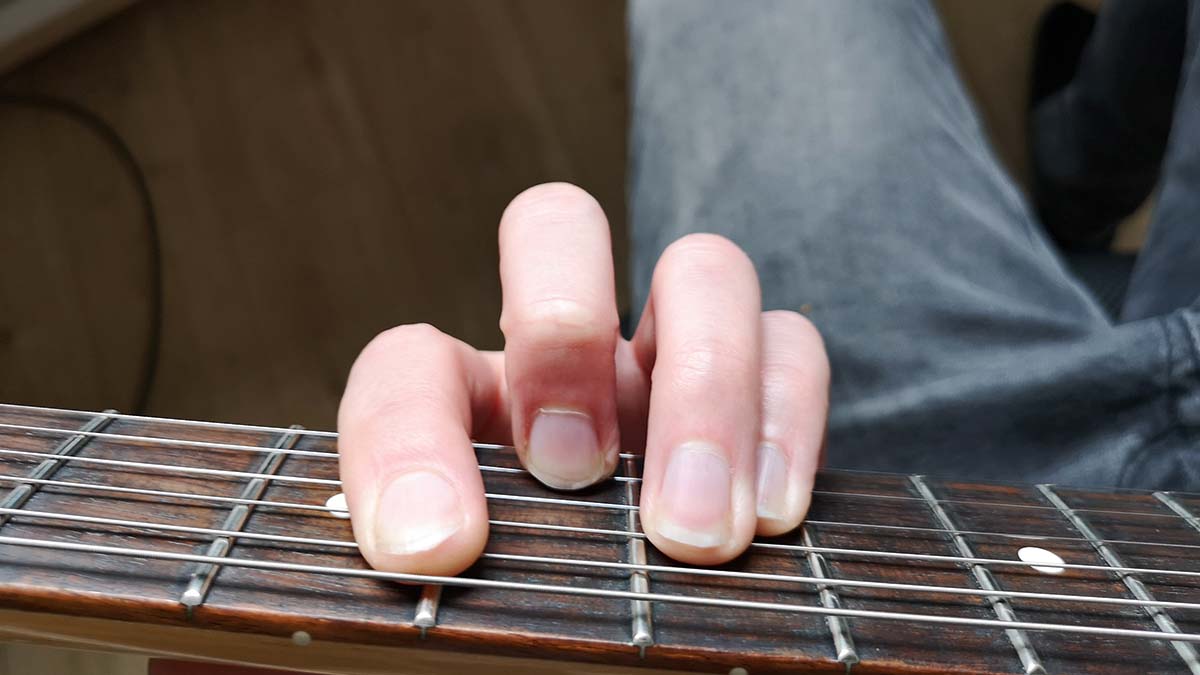
For the A shapes, including this minor version, you can stop the sixth string ringing out by stubbing up against it with your first finger.
Barre chord practice examples
Example 1. Barres for arpeggios
The arpeggio picking here will test the accuracy of your barring. Listen to every note and make sure it rings out cleanly. If you struggle, try changing to a partial barre, and practise playing just the top three or four strings.
Example 2. Funky stabs
These A (and A minor) shapes are great for funk guitar styles. Disco legend Nile Rodgers forms the full chord shapes but generally only strums two or three strings from each one. It’s a neat trick that gives him his signature sound.
Chris was Editor of Total Guitar magazine from 2020 until its closure in 2024, when he became Lesson Editor for Guitar World, MusicRadar and Guitar Player. Prior to taking over as Editor, he helmed Total Guitar's world-class tab and tuition section for 12 years, helping thousands of guitarists learn how to play the instrument. A former guitar teacher, Chris trained at the Academy of Contemporary Music (ACM) in Guildford, UK, and held a degree in Philosophy & Popular Music. During his career, Chris interviewed guitar legends including Brian May and Jimmy Page, while championing new artists such as Yungblud and Nova Twins. Chris was diagnosed with Stage 4 cancer in April 2024 and died in May 2025.

